Triumph Motorcycle triples
Three is a magic number among fans of Triumph motorcycles. The firm’s fascination with three-pot engines goes right back to 1969 as a salvo against the growing threat from Japanese motorcycle manufacturers.
Previously known for its parallel twin-engined models, Triumph knew it had to up its game and performance to keep buyers from straying towards the likes of the four-cylinder Honda CB750 and Suzuki GT750, as well as the Kawasaki triple-powered models that were on the horizon. A three-cylinder inline layout was reckoned the best balance of compact size, light weight, power, and durability. That last point was important as the Japanese companies had already proven you didn’t need to spend all of your spare time nursing your motorcycle along to use it as intended.
However, Triumph didn’t start with a clean sheet design for its new triple. Instead, the 740cc unit was developed from the earlier 500cc twin-cylinder engine. This design split the parallel twin down the middle and grafted in a central cylinder to create the three-abreast motor.
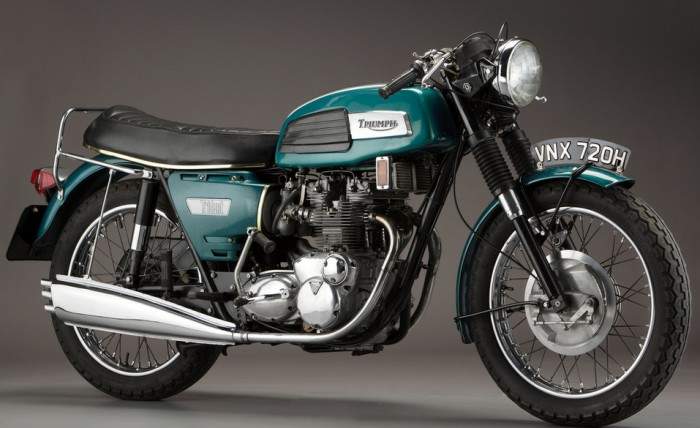
With 58bhp on offer at a revvy 7500rpm, the engine should have been installed in Triumph’s bikes and on sale in 1967. Yet, a decision to restyle the engine for improved looks delayed its introduction until 1969, by which time Honda had launched its four-cylinder CB750 and grabbed all the headlines. Still, the Trident was good for 120mph and there was still a lot of love for Triumphs in the all-important US market.
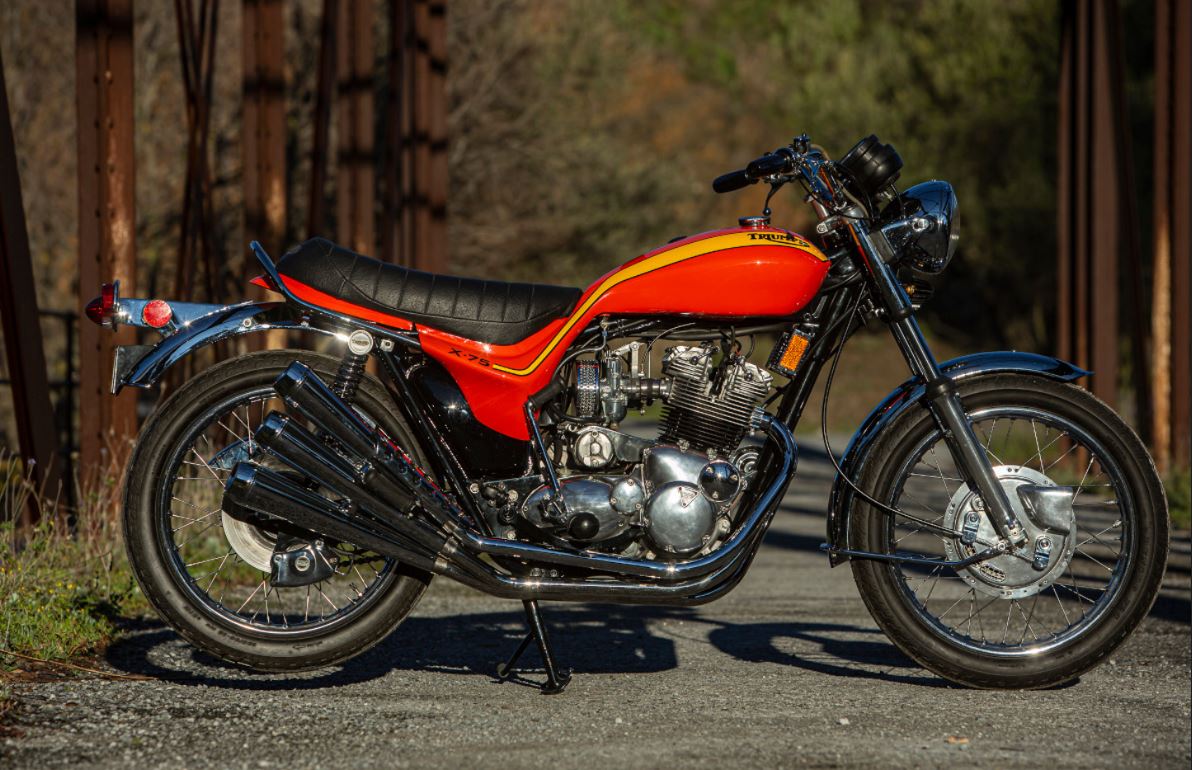
Installed in the X75 Hurricane, T160, Cardinal, and a Quadrant, as well as some successful race bikes and also in the BSA Rocket 3. There was also a police-spec version of the Trident, but by 1975 it was all over for Triumph’s rival to the Japanese Big Four. A mix of shifting tastes and attitudes with riders plus industrial strife in the Triumph factory put paid to what was a very good motorcycle and three-cylinder engine.
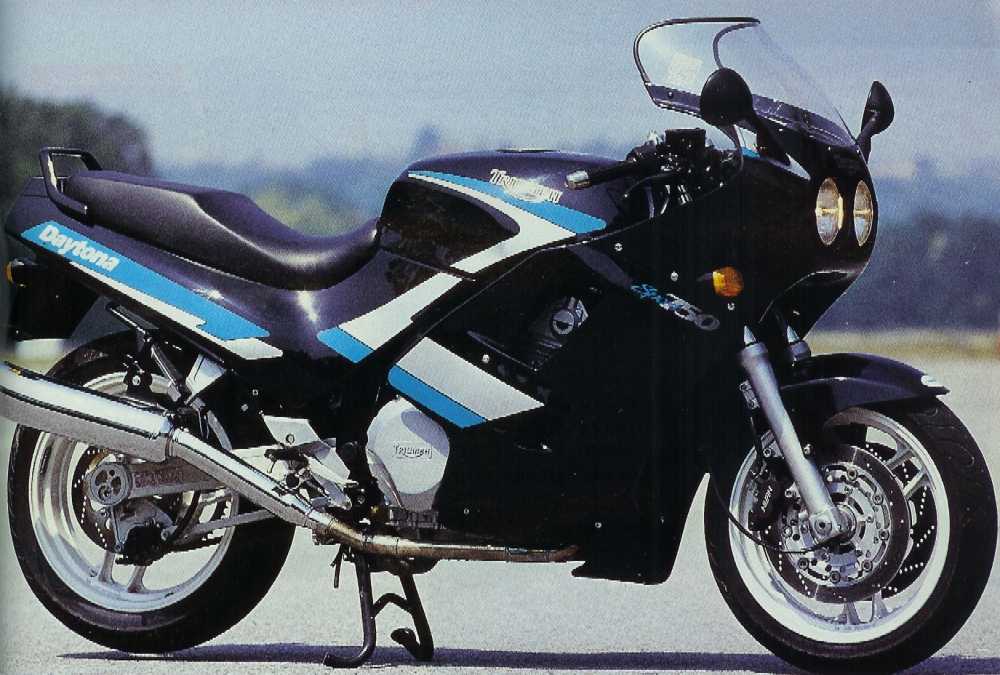
This wasn’t the end of the Triumph Triple story, though, as businessman John Bloor bought the manufacturing rights to Triumph in 1983. After a period where some bikes were built under licence, Bloor restarted production of Triumph properly at a new factory in Hinckley, Leicestershire. Recognising the need to rationalise design and production, Bloor instigated a new engine range of three- and four-cylinder motors that shared as many components as possible yet offered options to different buyers. The first of these engines were used in the Daytona 750 triple and four-pot Daytona 1000 in 1990.

While the Daytona models got the ball rolling, it was the 1991 Trophy 900 that pulled Triumph into the new 1990s decade with its smoother styling. The characterful three-cylinder 885cc engine gave 100bhp and attracted buyers who might otherwise have opted for a Honda VFR750. It was good to ride and sounded great thanks to its idiosyncratic engine layout.
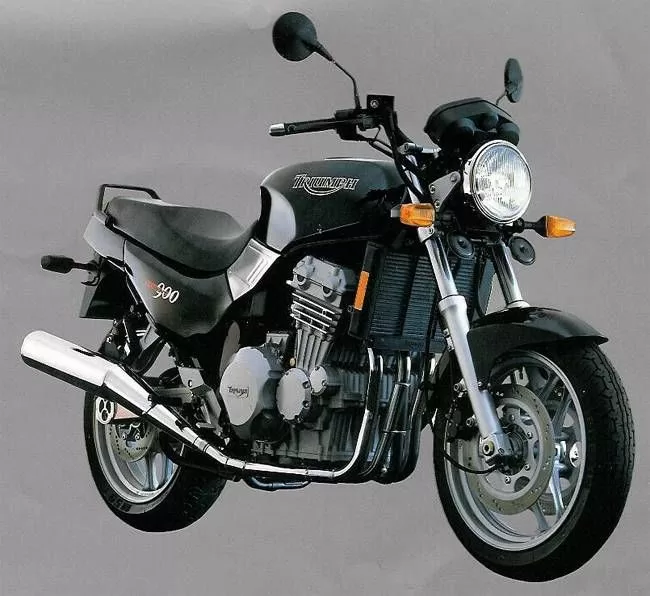
Triumph broadened the range with a second-generation of Trident, which was essentially an unfaired version of the Trophy. It gave more traditional Triumph fans a motorcycle to rally around, but more was to come when the Thunderbird name was revived with a perfectly judged retro machine. However, what really piqued the interest of the motorcycle press and buyers alike was the Speed Triple that arrived in 1994. It had started life with a 748cc version of the triple motor but was rapidly upgraded to the 885cc for the Speed Triple 900, and a legend was born.
The pared back ‘streetfighter’ look was exactly what buyers were after and the Triumph went as well as it looked. The company even created a race series to prove this was not a case of style over substance. Yet, more was to come with the Speed Triple series as the T509 and then 955i model arrived in 1997 and 1999 respectively. Even more aggressive in their looks and riding position, these became seminal motorcycles of the period and are now prized as modern classics, especially in the more vivid colours that Triumph offered them in.
If the Speed Triple was just too much of a rebel for your tastes, Triumph used the same basic ingredients of engine and chassis to create the extremely able T595 Daytona. It might not have had the crazed top end rush of a Honda Fireblade or Yamaha R1, or the exoticism of a Ducati 996, but the Brit won plaudits and sales for being superbly able. Comfortable on long trips, magnificent in the twisties, and it sounded epic thanks to the engine’s triple design. Fitted with a discreetly louder exhaust, the noise of a T595 Daytona on full charge is one of the great aural delights in motorcycling.
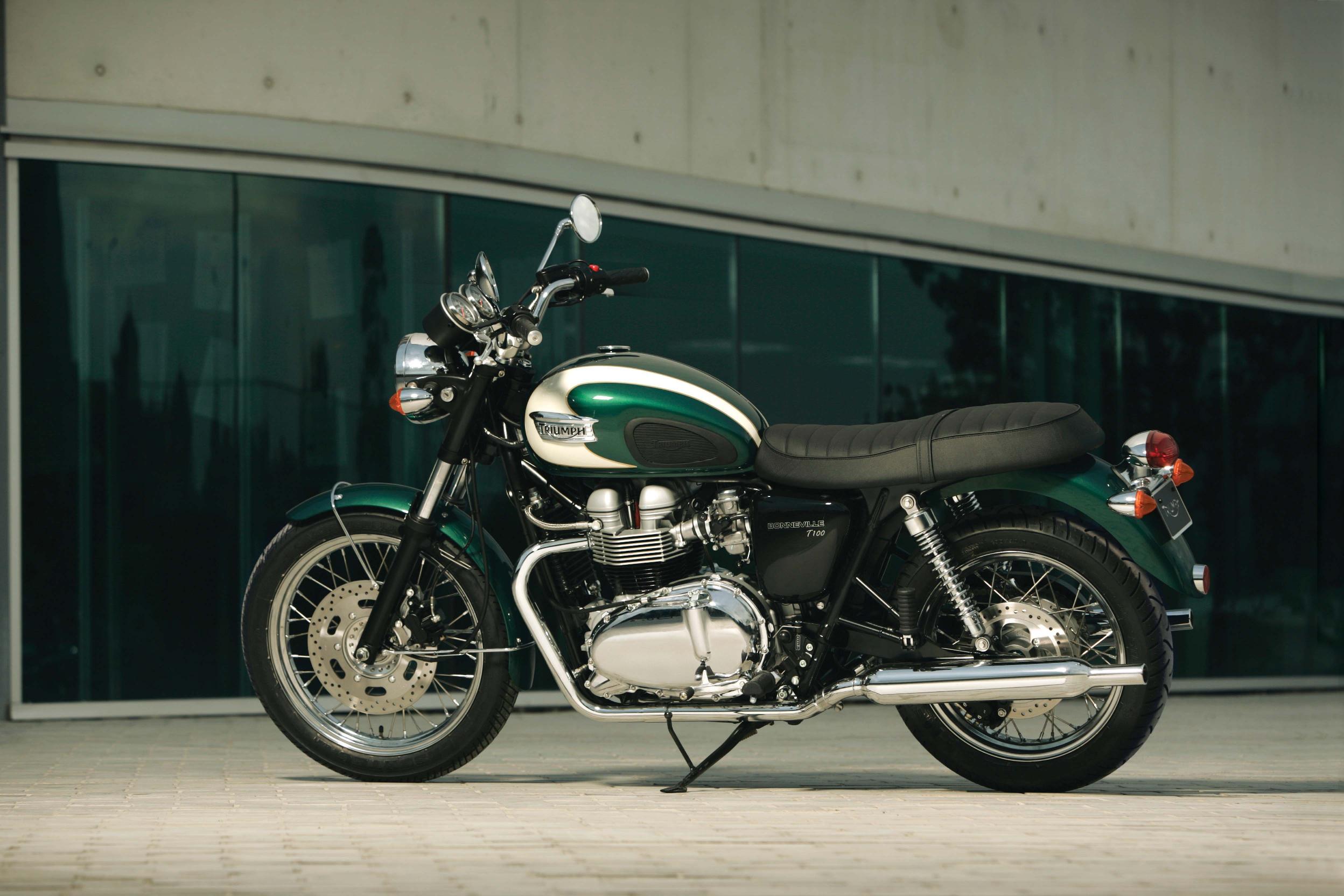
Triumph used the same engine in other motorcycles, such as the Tiger 900 and Bonneville, as well as making smaller and larger triple engines for the likes of the Street Triple 675 and Speed Triple 1050. Yet there was another much bigger statement of three-cylinder engine design madness still to come in the shape of the Rocket III.
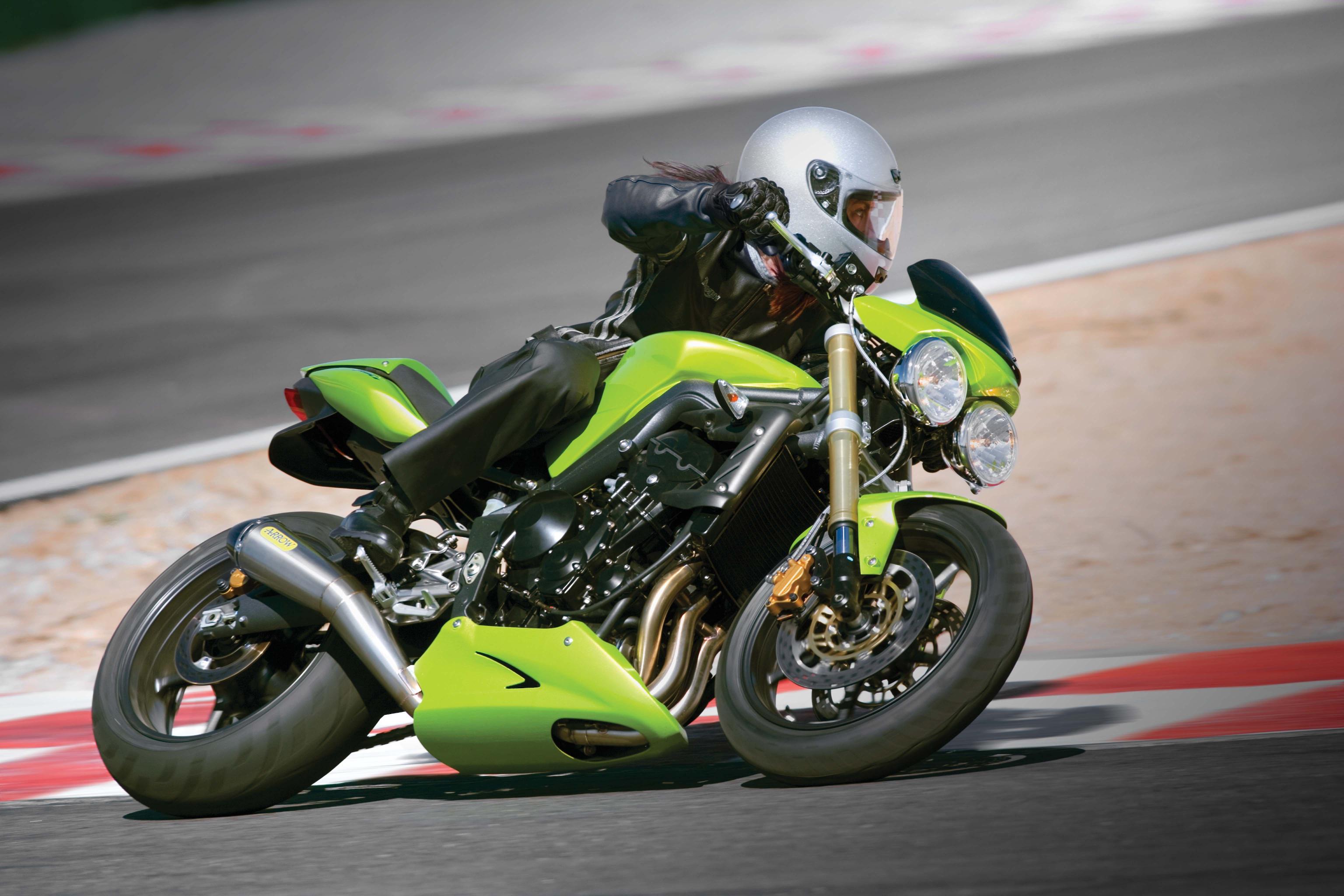
The name of the Rocket III referred to its three-cylinder engine layout, and this 2294cc machine stood out for being the largest capacity production motorcycle at the time. Its 2.3-litre motor produced a lazy 127bhp, later improved to 148bhp, but it was the huge gobs of low-down shove that made it such an event to ride the Rocket. Even with its considerable weight and retro styling, the Rocket could accelerate alongside sports bikes of the period, and test the muscles of its rider to hang on as it did so.
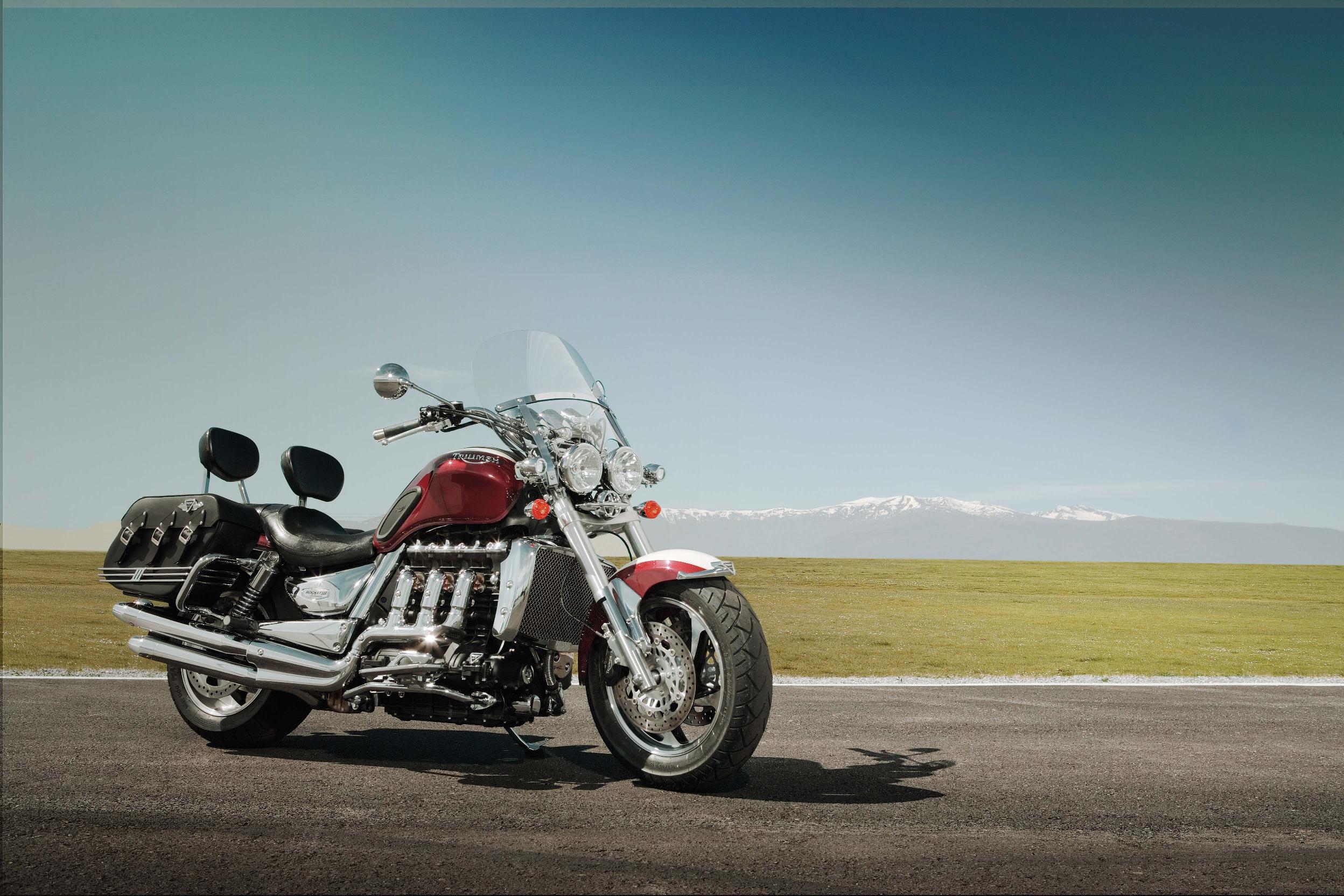
Triumph offered the Rocket III in a variety of styles, from simple roadster to chrome-laden versions, but all were defined by that huge three-cylinder engine. Production of this Rocket ended in 2017 and it’s every inch a modern classic, just like all the other Triumph triples with their distinctive engine’s beat.
The good news is there’s a new Rocket 3 in Triumph’s current range, which sits alongside other triple-powered models, so the world will be reverberating to the sound of Triumph triples for a long time still to come.
Have you ever owned a Triumph motorcycle? Let us know in the comments below!

COMMENT